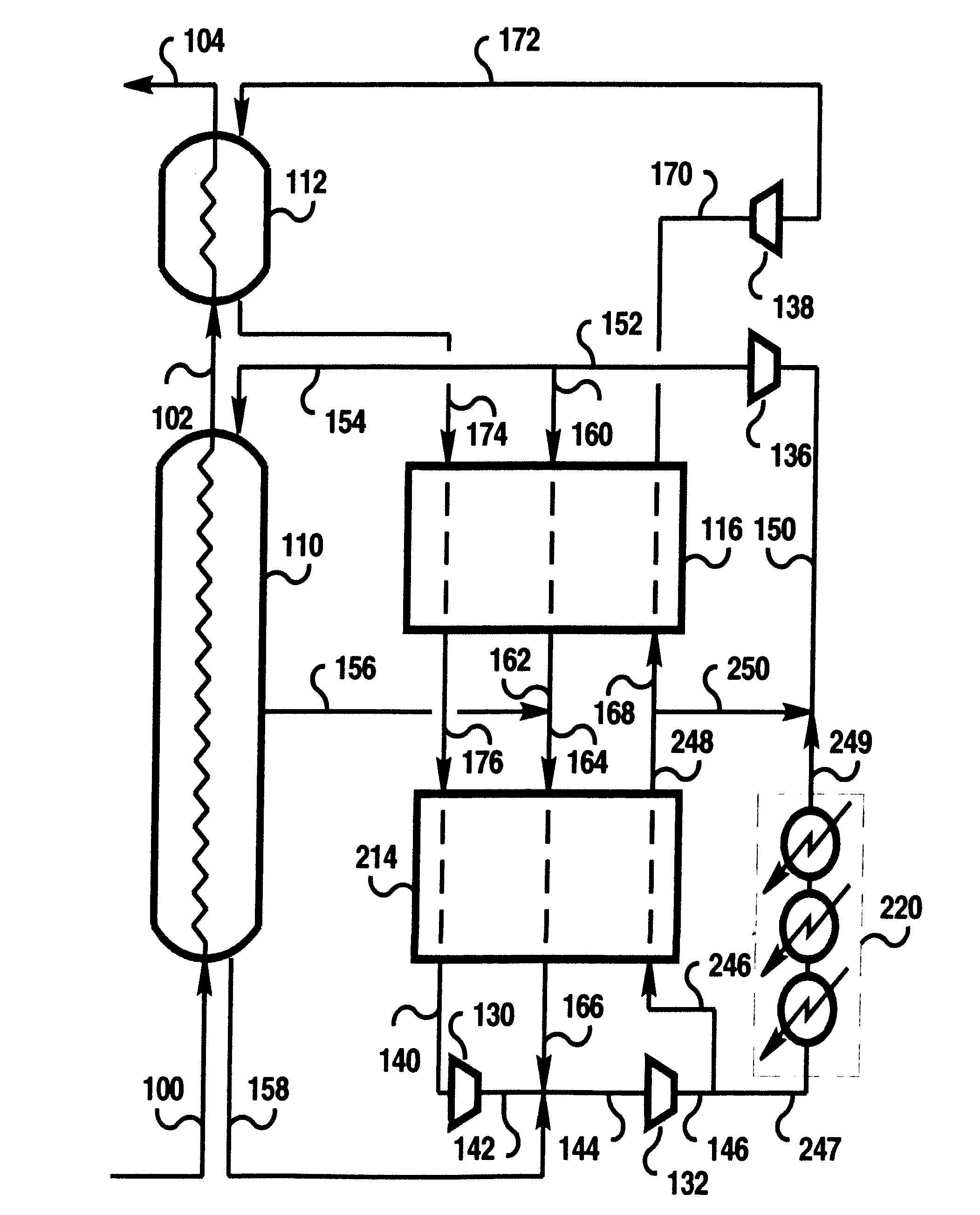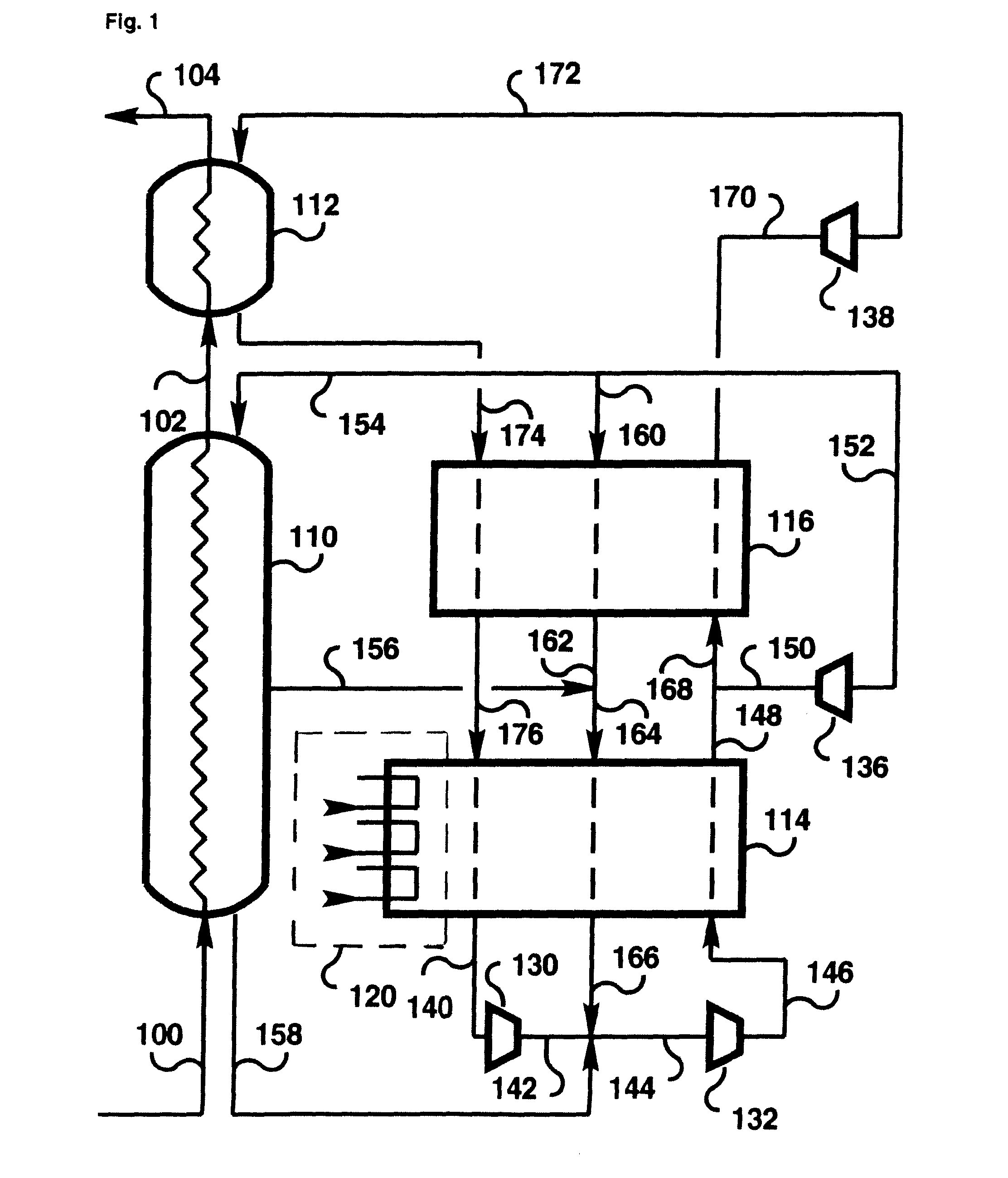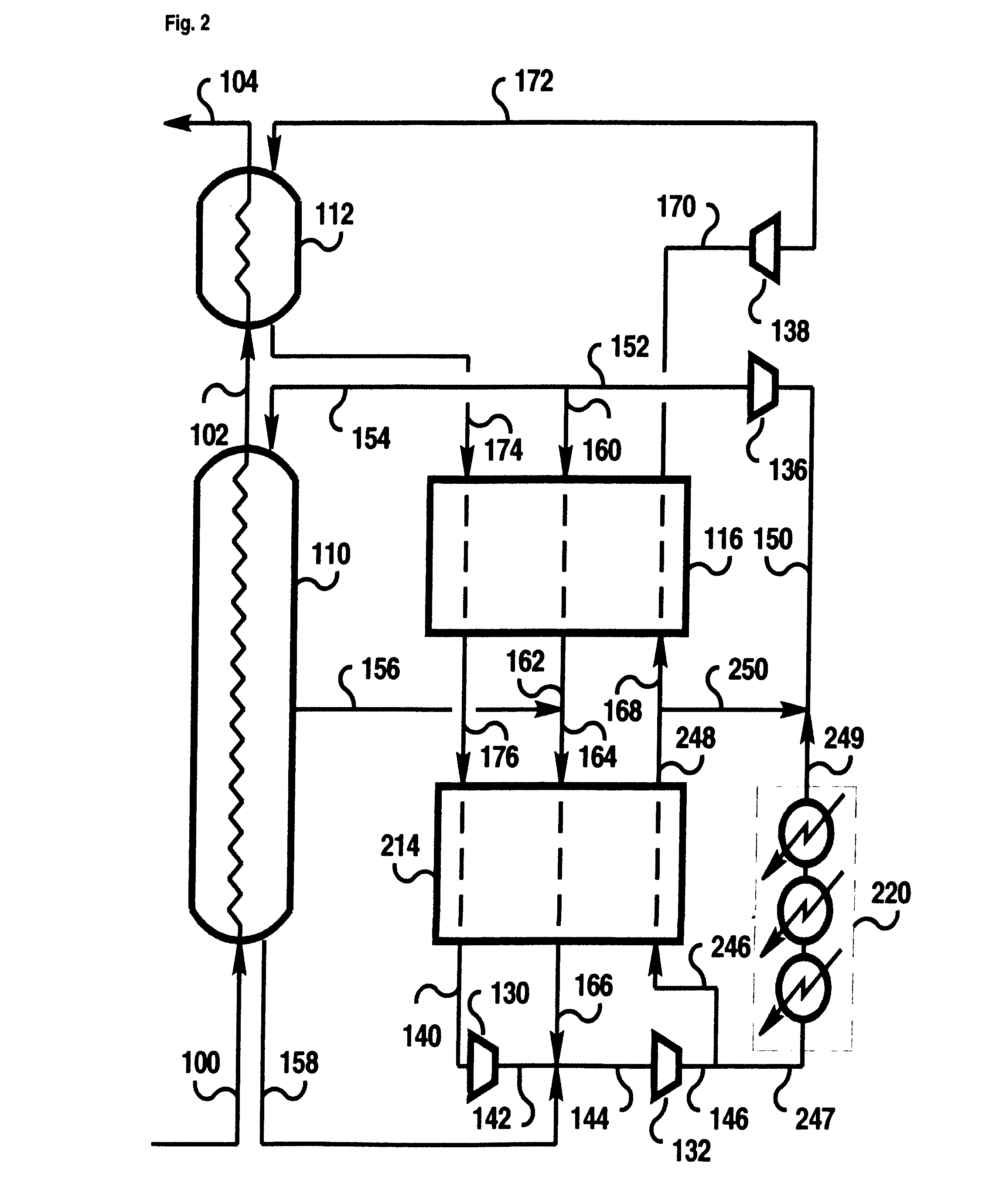Liquefaction method and system
a liquefaction method and system technology, applied in the field of liquefaction methods and systems, can solve the problems of improving efficiency, reducing the flexibility of closed-loop systems, and reducing the efficiency of liquefaction, so as to achieve the effect of safe, efficient and reliabl
- Summary
- Abstract
- Description
- Claims
- Application Information
AI Technical Summary
Benefits of technology
Problems solved by technology
Method used
Image
Examples
example
[0065]Referring to FIG. 3, 3,160 lbmol / hr of natural gas containing approximately 92% of methane, 1.6% of nitrogen, 3.4% of ethane, 2% of propane, and 1% of heavier components at 113° F. and 180 psia (stream 100) was precooled to approximately −31.6° F. by the refrigeration system 320 comprising 3 kettles with vaporization of R134A refrigerant (C2H2F4). The refrigerant was compressed in a 3-stage compressor, as illustrated in FIG. 6. The refrigerant compressor's suction pressure was approximately 0.5 bar absolute. Keeping the suction pressure at vacuum allowed subcooling to a lower temperature. Using a non-flammable refrigerant assured safe operation.
[0066]Resulting stream 301 was cooled in the liquefier heat exchanger 310 to −136° F. at which point the stream 102 was all liquid. It was then subcooled in the subcooler exchanger 112 to −261° F. providing resulting stream 104.
[0067]Gaseous nitrogen from the discharge of high-pressure refrigerant compressor 132 was at 104° F. and 1,200...
PUM
 Login to View More
Login to View More Abstract
Description
Claims
Application Information
 Login to View More
Login to View More - R&D
- Intellectual Property
- Life Sciences
- Materials
- Tech Scout
- Unparalleled Data Quality
- Higher Quality Content
- 60% Fewer Hallucinations
Browse by: Latest US Patents, China's latest patents, Technical Efficacy Thesaurus, Application Domain, Technology Topic, Popular Technical Reports.
© 2025 PatSnap. All rights reserved.Legal|Privacy policy|Modern Slavery Act Transparency Statement|Sitemap|About US| Contact US: help@patsnap.com



